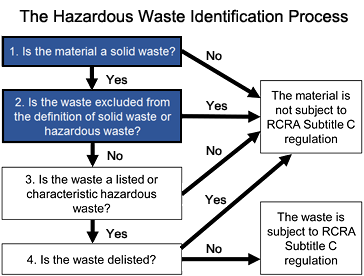The 3-Minute Rule for Reclaim Waste
The 3-Minute Rule for Reclaim Waste
Blog Article
The Single Strategy To Use For Reclaim Waste
Table of ContentsTop Guidelines Of Reclaim WasteReclaim Waste for DummiesHow Reclaim Waste can Save You Time, Stress, and Money.Reclaim Waste - QuestionsThe Definitive Guide to Reclaim Waste
Explore the kinds, occurrences, and kinds of liquid waste. Domestic sewer waste refers to the waste and items from a household septic container. This type of waste is created by people in houses, colleges, and other structures. This only includes septic systems that have a drainpipe field. The appropriate management and disposal of residential sewage waste call for liquid waste to be transferred to a sewage therapy plant where the appropriate approaches and equipment are related to purify and throw away waste.
Commercial waste typically includes prospective threats, such as flammable materials or a combination of liquid and strong waste products, and needs a much more innovative and in-depth disposal process. The disposal of business waste commonly involves the filtration of waste prior to transport to make certain safe and appropriate disposal. Hazardous waste is developed from byproducts and runoff of industrial processes and manufacturing.
This sort of waste can not use the very same sewage management transport or processes as septic or business fluids. The hazardous waste administration procedure calls for the inspection and screening of liquid waste before it undertakes the disposal process (liquid waste removal). Drainage waste is the liquid waste that comes from overflow and excess stormwater in highly populated locations or cities
Drainage waste can create contamination and flooding if not handled appropriately. Ensuring proper waste management can stop calamities and decrease environmental harm.
More About Reclaim Waste
Get in touch with PROS Services today to find out about our waste management and disposal solutions and the proper means to care for the fluid waste you produce.
(https://www.pubpub.org/user/leon-aube)Do you understand what occurs to your water when you draw the plug, purge the toilet or drain the cleaning machine? No? Well, it's worth knowing. This supposed 'wastewater' is not only a vital source however, after therapy, will certainly be released to our land, rivers or the ocean. Used water from toilets, showers, bathrooms, kitchen area sinks, washings and industrial procedures is called wastewater.

water utilized to cool down machinery or tidy plant and equipment). Stormwater, a type of wastewater, is runoff that moves from agricultural and metropolitan locations such as roofs, parks, gardens, roadways, courses and rain gutters right into stormwater drains, after rain. Stormwater streams without treatment straight to neighborhood creeks or rivers, eventually reaching the sea.
All About Reclaim Waste
In Queensland, a lot of wastewater is treated at sewage therapy plants. Wastewater is transported from domestic or industrial websites via a system of drains and pump terminals, known as sewerage reticulation, to a sewage treatment plant.
The Division of Natural Resources recommends city governments about managing, operating and maintaining sewage systems and treatment plants. In unsewered locations, city governments may call for owners to mount individual or home sewage treatment systems to deal with domestic wastewater from toilets, kitchens, shower rooms and washings. The Department of Natural Resources authorises using household systems when they are proven to be reliable.
In some brand-new class, treatment of some stormwater to eliminate trash, sand and gravel has started utilizing gross toxin traps. Wastewater treatment takes place in four phases: Eliminates solid matter.
Wastewater then streams right into big containers where solids clear up and are removed as sludge. Oil and residue are skimmed from the surface. Uses small living organisms understands as micro-organisms to damage down and remove staying liquified wastes and fine fragments. Micro-organisms and wastes are integrated in the sludge. Gets rid of nitrogen and phosphorus nutrients that could create algal blooms in our waterways and threaten marine life.
Things about Reclaim Waste
Nutrient removal is not available at all sewer therapy plants since it needs expensive specialised tools. Clear fluid effluent produced after therapy may still have disease-causing micro-organisms - liquid waste removal.

The majority of wastewater flows right into the sewerage system. Under the Act, neighborhood governments carry out approvals and licences for advice ecologically relevant tasks (ERAs) entailing wastewater releases that may have a neighborhood effect.
Some Ideas on Reclaim Waste You Should Know
Tracking provides accurate info concerning water quality and can verify that licence conditions are being met. The information acquired via surveillance gives the basis for making water quality decisions.
Report this page